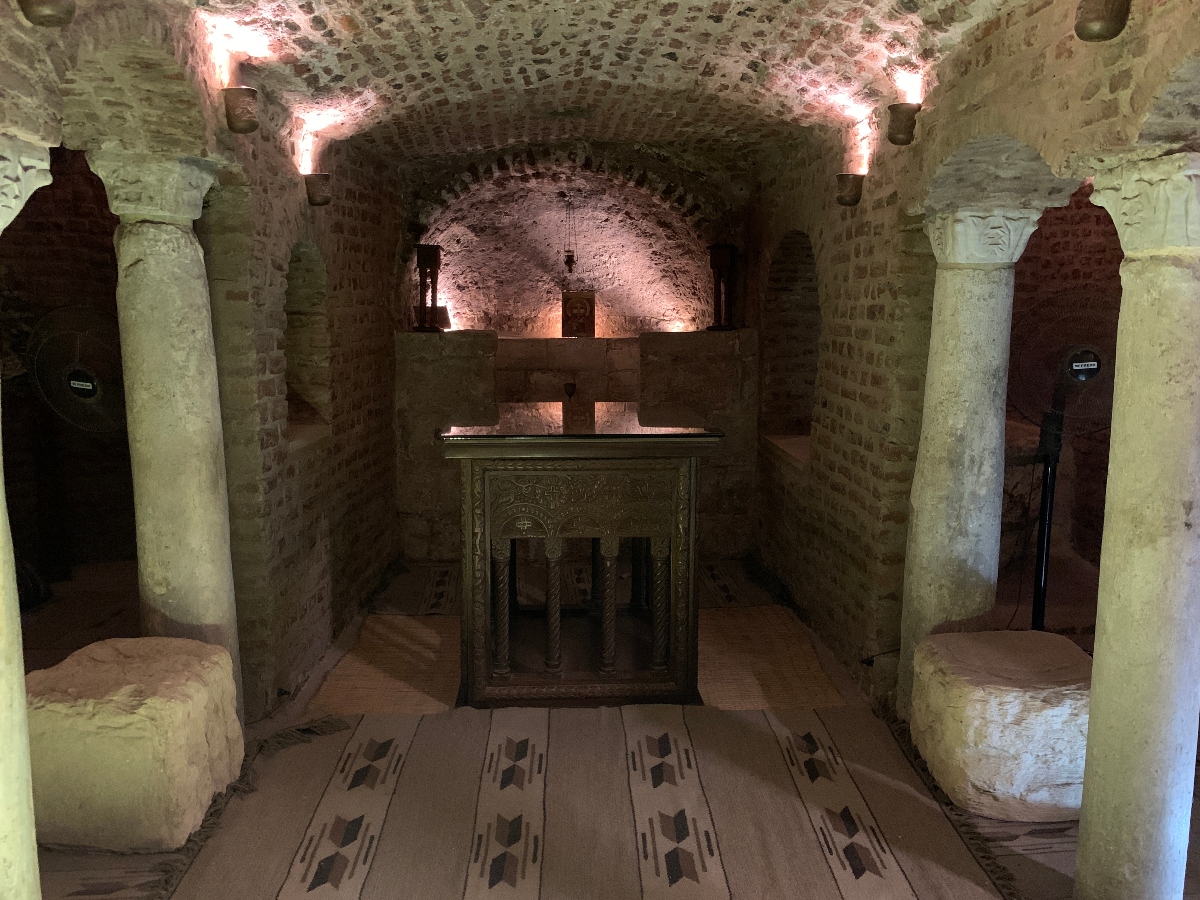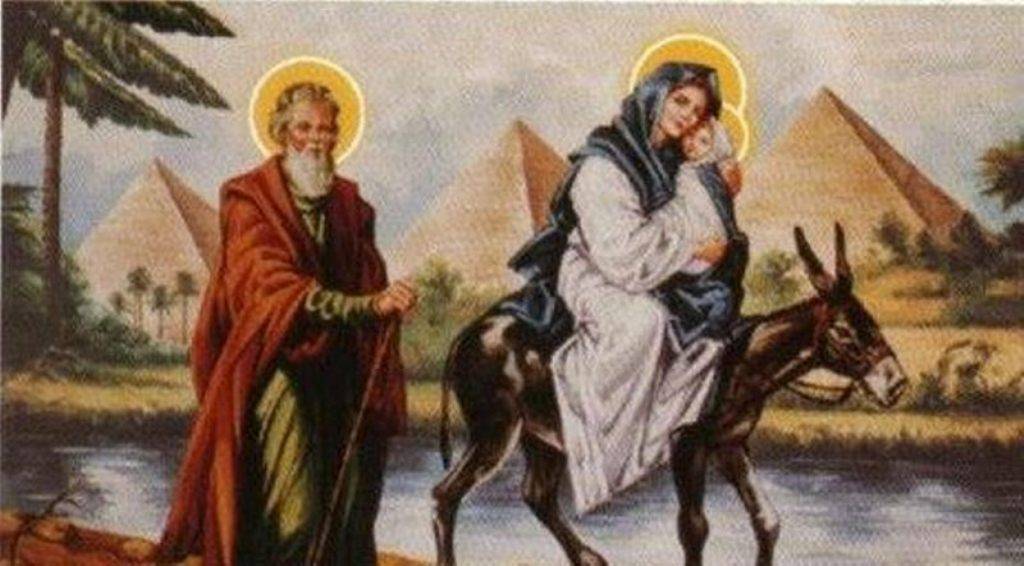As told in the Bible, the Holy Family, Joseph, Mary and the baby Jesus Christ fled from Palestine to Egypt to seek refuge from the persecution of the Jewish King Herod the Great. As they stayed in Egypt for three years, they lived a nomadic life, traveling through a total of 11 of Egypt’s modern-day governorates, starting from North Sinai going all the way south to Assiut.
During their time in Old Cairo, the Holy Family rested in a cave for three months, and like many other holy sites, a church was built on it; the Church of Abu Serga.

Photo via Marina Makary
Popularly known as the Church of Abu Serga, the Cavern Church or the Church of the Martyrs Sergius and Bacchus dates back to the late fourth to early fifth centuries AD. The church was named after Saints Sergius and Bacchus who served as soldiers in the Roman Army and were both martyred in Syria for their Christian beliefs. Their relics are now kept in the church. To make it easier for people to pronounce, the names of the two saints were combined and the church was named “Abu Serga” as a short form and a more memorable name.

Photo via Marina Makary
According to multiple historians, such as the theologian Hippolytus of Rome, and the chronicles of Pope Theophilus, the 23rd Patriarch of Alexandria (385-412 AD), Abu Serga Church encompasses the cavern where the Holy Family rested, the well which they drank from, the stone that baby Jesus slept on, a few stones that they walked on, among other ancient manuscripts, as well as icons of the Holy Family from the 18th and 19th century.

Photo via Marina Makary
The cave can be accessed through staircases from two sides; one from the hall of the southern side of the church and the other from the center of the hall on the northern side. Located around 21 feet below the floor of the church, the cave has no windows.

Photo via Marina Makary
‘Kanayes Masr El Adeema’ which literally translates to the churches of Old Egypt or Old Cairo is one of the most popular local and touristic religious areas. Both Egyptians and tourists often visit that area as it includes the Hanging Church, the Church of Saint Barbara, the Church of Saint George and its monastery, as well as the Church of Abu Serga.
Walking through the hallway surrounded by some of the oldest Coptic churches and monasteries, the area is always filled with tourists and locals from different cultures and religions.

Photo via Marina Makary
The Trail of the Holy Family is currently being developed by the Ministry of Tourism and Antiquities in cooperation with the Ministry of Culture to prepare the infrastructure of the Family’s 25 recognised stops in efforts to support and promote cultural and religious tourism in Egypt.
All the churches in the area, including the Church of Abu Serga, are currently open to the public. However, Saint George’s monastery is closed for the safety of the nuns during the COVID-19 pandemic.







Comments (3)
[…] Every year, dozens flock to visit Virgin Mary Monastery in Dronka, one of the final stops in the Holy Family Trail. […]
[…] Every year, dozens flock to visit Virgin Mary Monastery in Dronka, one of the final stops in the Holy Family Trail. […]